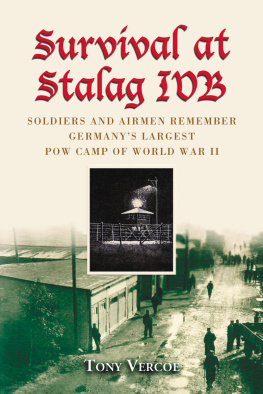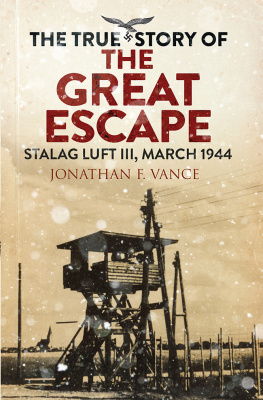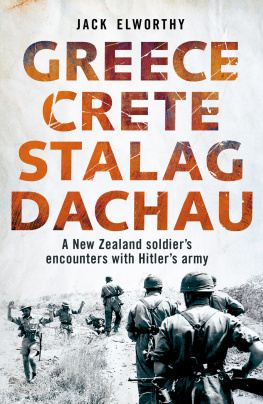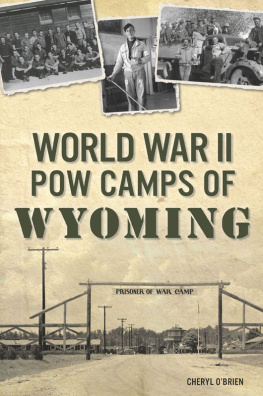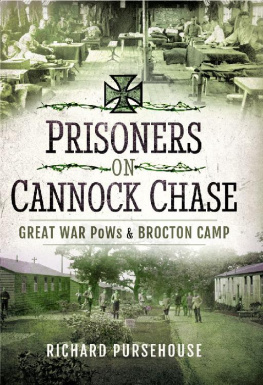
Survival at Stalag IVB
Soldiers and Airmen Remember Germanys Largest POW Camp of World War II
TONY VERCOE

McFarland & Company, Inc., Publishers
Jefferson, North Carolina
LIBRARY OF CONGRESS CATALOGUING DATA ARE AVAILABLE
BRITISH LIBRARY CATALOGUING DATA ARE AVAILABLE
e-ISBN: 978-0-7864-2404-7
2006 Tony Vercoe. All rights reserved
No part of this book may be reproduced or transmitted in any form or by any means, electronic or mechanical, including photocopying or recording, or by any information storage and retrieval system, without permission in writing from the publisher.
On the cover: photographMain Street 1945 (E.J. McGregor); inset Stille Nacht (drawing by Ray Newell)
McFarland & Company, Inc., Publishers
Box 611, Jefferson, North Carolina 28640
www.mcfarlandpub.com
Lew Parsons of Essex, U.K., is principally responsible for my undertaking this memoir of Stalag IVB, and for the considerable documentary material he provided at the outset and for his continuing encouragement, I am greatly indebted. Lews example has generously been followed by many other veterans of that wartime, wire-bound, unforgotten enclosure in Saxony, and all of these are acknowledged elsewhere in the book.
Acknowledgments
References, information and other assistance received from the following, and much to the advantage of this book, are gratefully acknowledged:
Comit International de la Croix Rouge, Geneva, Switzerland
George Czekalowski (U.K.), primary scans of Ray Newell pictures
Rudi de Kinderen, Flying Colours (N.Z.), scans of all illustrations
Defence Base Records, Wellington, New Zealand
George Duncan (research website) www.iinet.net.au/~gduncan
Gedenksttte Ehrenhain Zeithain, Saxony, Germany
Imperial War Museum, London, U.K.
106th Infantry Division Association, USA
National Association, American Ex-Prisoners of War, USA
Public Records Office, Kew, U.K.
Royal Air Force Museum, Hendon, U.K.
Second World War Experience Centre, Leeds, U.K.
Stalag IVB Association, Chicago, USA
Stalag IVB ex-POW Group, U.K.
And thanks to Les Editions de Minuit, France, for permission to reprint lines from Paul Eluards Libert (Au rendez-vous allemande, 1945)
Preface
The largest of all the German World War II prisoner of war camps is the subject of this book. Stalag IVB, as the war went on, became a crowded, pestiferous monster of a place within whose bleak boundaries the men of many nations were confined and in which they struggled daily to sustain morale and self-respect, or merely to keep themselves clean.
For much of its five and a half years of existence Stalag IVB was a melting pot as more and more menand occasionally, womenwere brought there to spend months or years inside its barbed wire perimeters or to be transferred to some of the hundreds of satellite Lagers which it supported.
Based on the firsthand experiences of the author, thorough research and many absorbing contributions from other veterans, this work is an extensively illustrated evocation of the camp, its background, layout, procedures for the intake of prisoners and the subsequent nature of their lives there. The vital role of the International Red Cross in their survival is acknowledged, and a collateral chapter enacting life in the vast network of satellite and work camps (Arbeitskommandos) is included.
Inevitably, given its great size and multinational character, the author has been able to enrich his case history of Stalag IVB with authentic accounts of a number of strange incidentssome of them frankly bizarrein compiling a chronicle as unique and dramatic in its own way as those of Oflag IVC, Colditz or Stalag Luft III, Sagan.
Introduction
Standing there, remembering, looking back across time, I see the past rising again. The stark frame of the arched gateway is there, the clock, the armed guard staring down. Main Street stretches away beyond, running straight between the gray-walled huts.
Men are there, leaning against the barrack walls, gathering at the swap shop, walking to keep the circulation going, all marking time. And that stinkit hangs in the air everywhere. The putrid old Scheissenwagen cant be far away, trundling between compounds; and the Russians
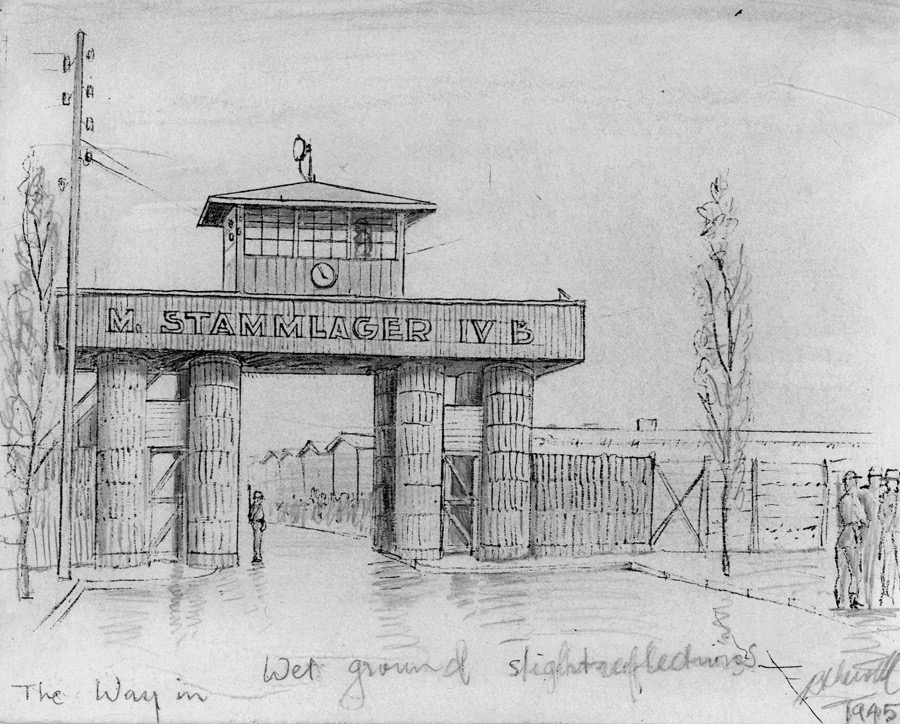
Main entrance to M. Stammlager IVB, drawn by Ray Newell in 1945.
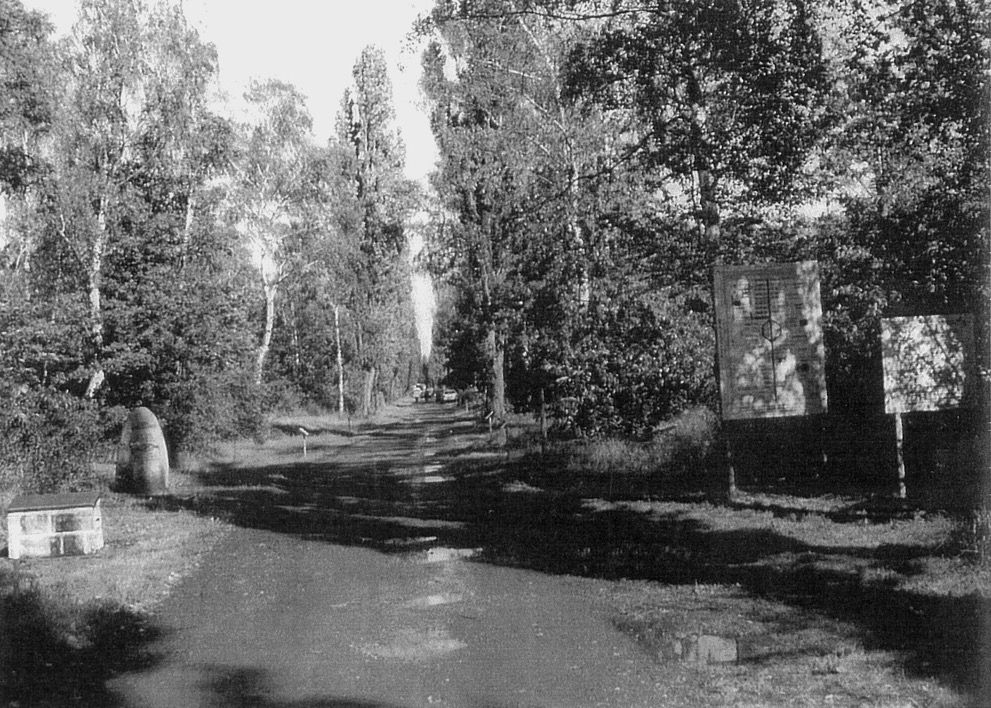
Camp location and Main Street in 2001 (courtesy Alex Franks).
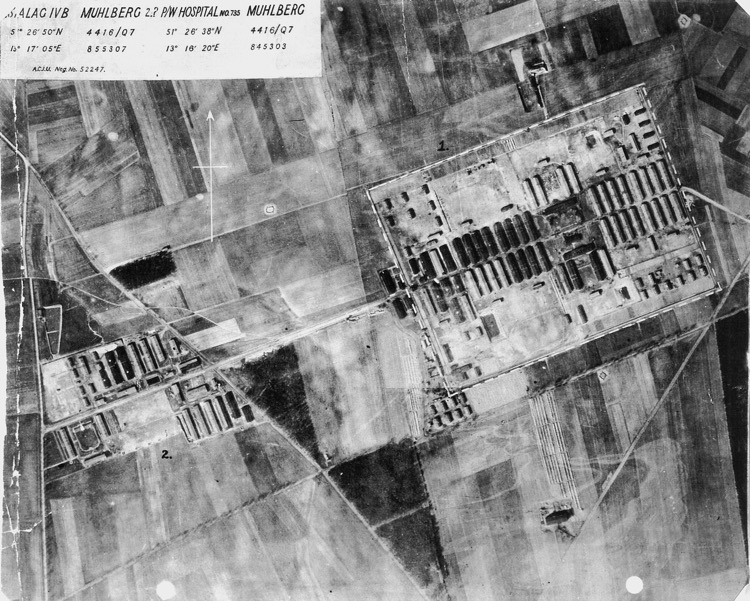
Aerial photograph of camp (RAF photograph A.C.J.U. Neg. No. 52247, declassified).
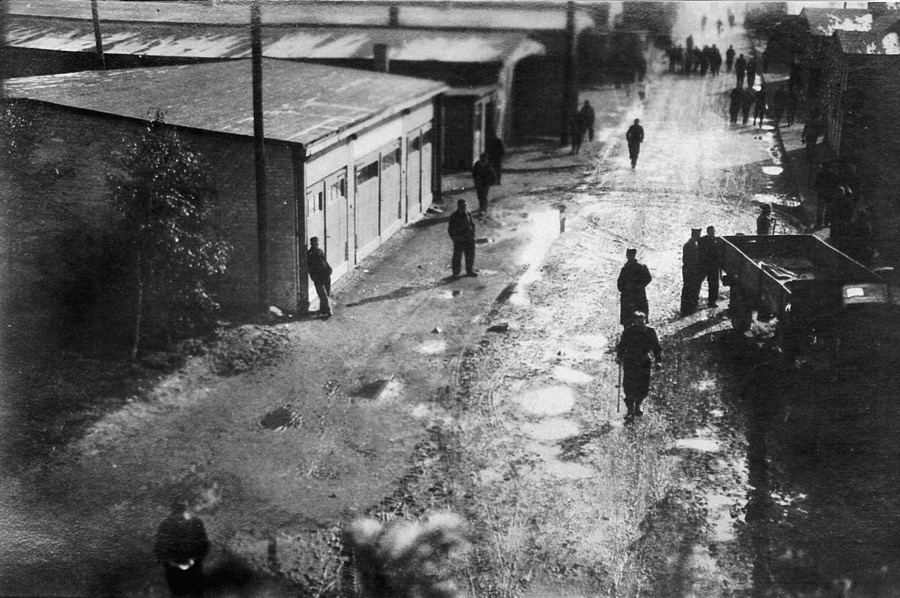
Main Street 1945 (E.J. McGregor photograph).
1
M. Stammlager IVB
Es ist die letzte territoriale Forderung, die ich Europa zu stellen habe.
(Adolf Hitler, referring to Sudetenland, in a speech in Berlin, 1938)
PART ONE
While the world west of the Rhine may have derived some reassurance from this declaration by Hitler that the Sudetenland was to be his last territorial claim in Europe, countries close to Germanys eastern and southern borders could hardly have been put at ease by it. From their viewpoints it was obvious that the military activism of the Third Reich had already far outrun the substance of the statement. They could see an inexorable march under way.
The Wehrmacht occupied Czechoslovakia in March 1939 and by then various separate, though not unrelated, German military initiatives were also well advanced. One of these was the tactical search by the German Army Fiscal Service in many parts of the country for suitable sites at which to establish a network of Stammlagers (muster-encampments, or prisoner-of-war transit camps). It found several in Saxony, leased them and delegated the responsibility for their administration to Wehrkreis IV (War Area IV Command) based at Dresden.
Here are the details for the Mannschafts Stammlager as translated by Heinz L. Herz from a postwar report by the German historian Achim Kilian:
Location: Away from main trafic routes, but not more than 5 kms distant from a railroad station.
Site characteristics: Flat, good visibility, shielded from heavy winds, with sandy, tillable soil.
Size: Minimum of 40 hectares to hold 10,000 POWs.
Water: Source must be readily available and simple to supply.
German Army specifications for a double barbed-wire fence, watch towers etc.
The area of open land that would become Stalag IVB seemed to meet most of these conditions. Nearby patches of woodland were neither dense enough nor close enough to the camp to cause concern. The location was some 4 kilometers northeast of the village of Mhlberg-am-Elbe in the heart of eastern Germany, within a triangle of the major cities: Berlin, 96 kilometers to the north, Leipzig, 64 kilometers to the southwest and Dresden, some 55 kilometers southeast. The main railway south from Berlin to Dresden and beyond passed through nearby Riesa.
Next page
